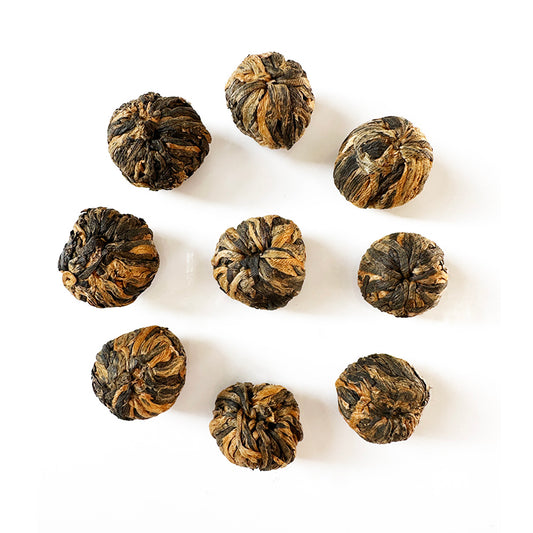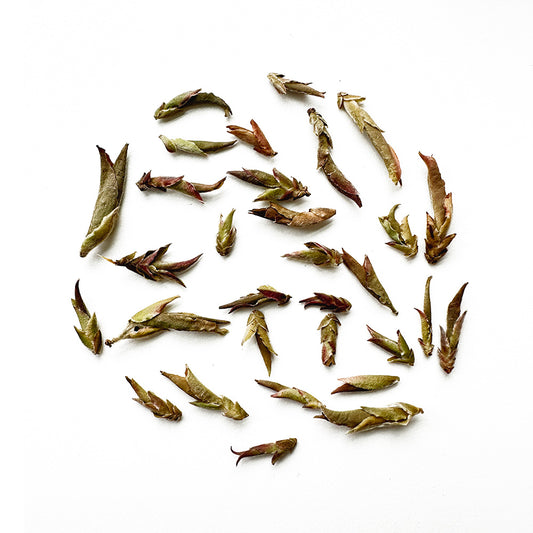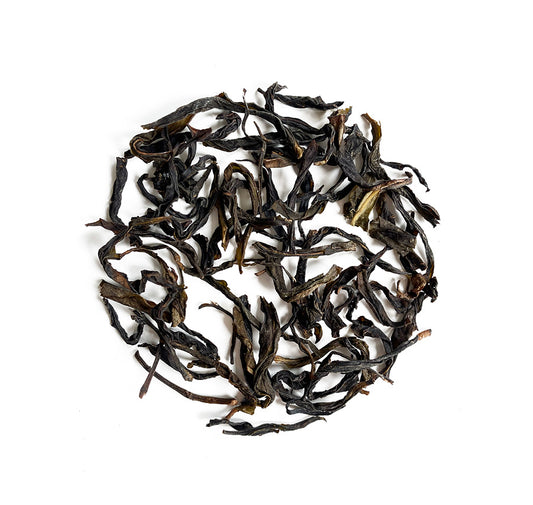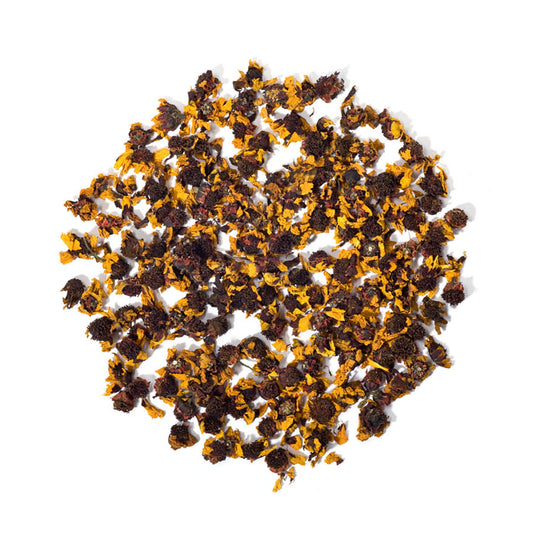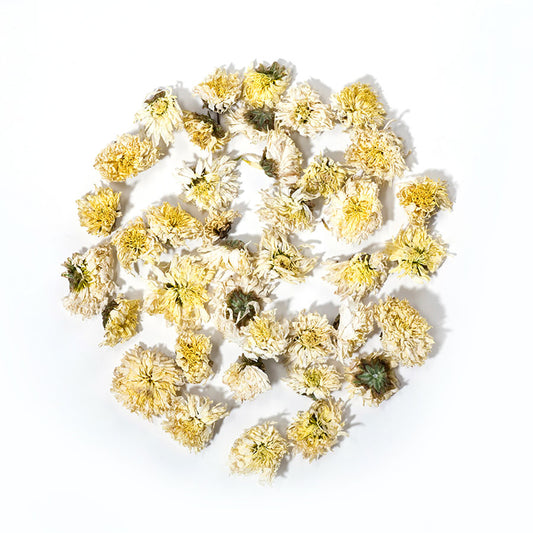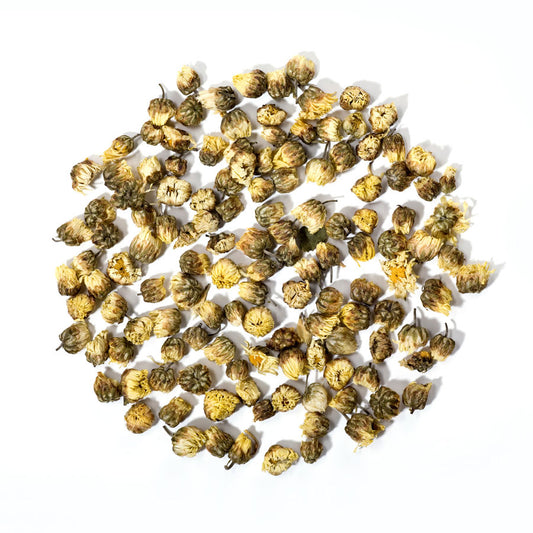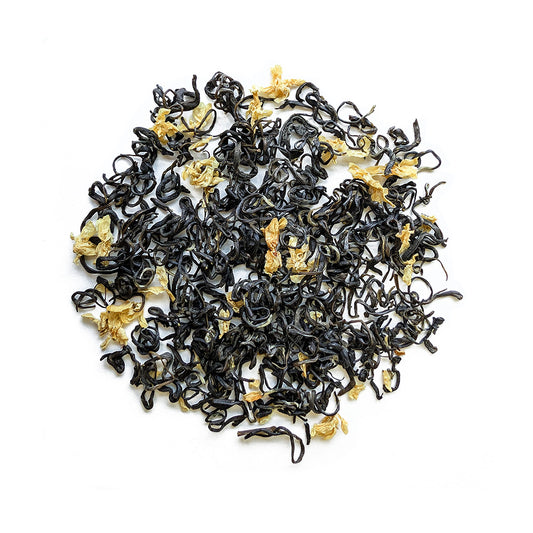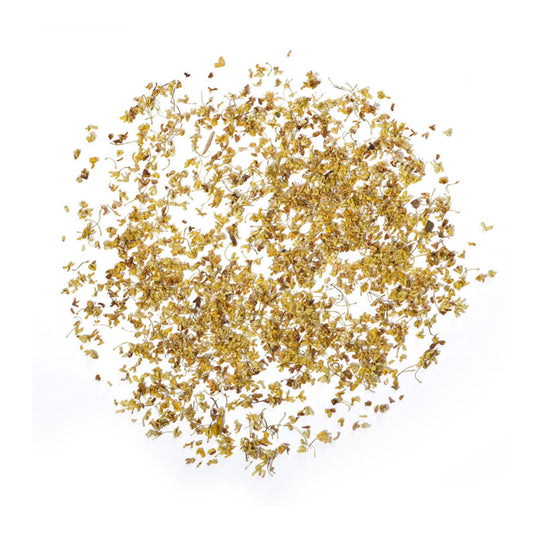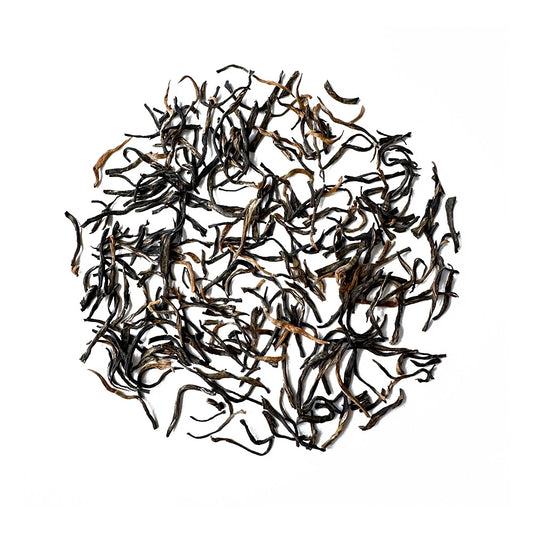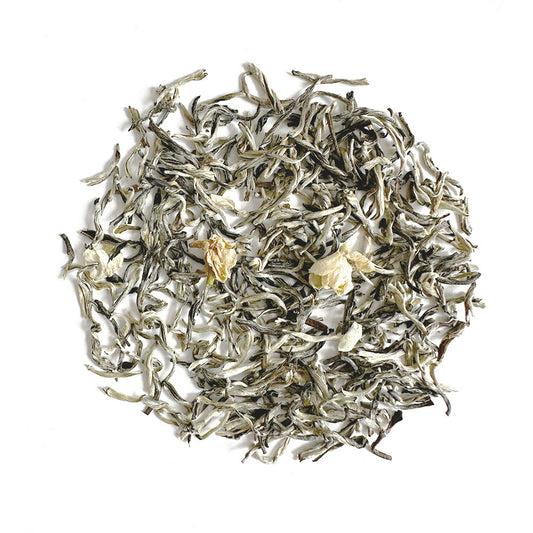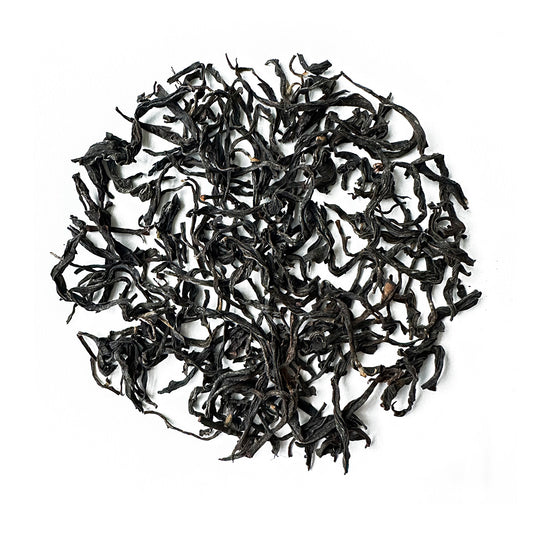Collection: Chinese tea
-
Bai Mu Dan (White Peony) White Tea
Regular price €2,95 EURRegular priceUnit price / per -
Huang Shan Mao Feng Green Tea
Regular price €9,95 EURRegular priceUnit price / per -
Red Dragon Pearls - Black Tea Pearls
Regular price €11,95 EURRegular priceUnit price / per -
Wild Purple Yabao Tea, Da Xue Mountain
Regular price €14,50 EURRegular priceUnit price / per -
Huang Zhi Xiang (Yellow Gardenia) Dan Cong Oolong Tea
Regular price €12,50 EURRegular priceUnit price / per -
Zhi Lan Xiang Dan Cong Oolong Tea
Regular price €11,95 EURRegular priceUnit price / per -
Enshi Yulu (Jade Dew) Green Tea
Regular price €9,95 EURRegular priceUnit price / per -
Kunlun Snow Chrysanthemum Flower Tea
Regular price €11,95 EURRegular priceUnit price / per -
White Chrysanthemum (Gong Ju) Flower Tea
Regular price €10,95 EURRegular priceUnit price / per -
Calming Chrysanthemum (Tai Ju) Flower Tea
Regular price €8,95 EURRegular priceUnit price / per -
Jasmine Tea Deluxe with Flowers
Regular price €6,95 EURRegular priceUnit price / per -
Osmanthus Tea
Regular price €14,95 EURRegular priceUnit price / per -
Lichuan Gongfu Black Tea (Lichuan Hong)
Regular price €9,95 EURRegular priceUnit price / per -
'Snow Jasmine' Green Tea Buds
Regular price €3,50 EURRegular priceUnit price / per -
Huang Mei Gui (Yellow Rose) Lapsang Souchong
Regular price €9,95 EURRegular priceUnit price / per -
Xin Yang Mao Jian Green Tea
Regular price €10,75 EURRegular priceUnit price / per
Do you have questions about Chinese tea?
Chinese tea 101
What is Chinese tea
The world of Chinese tea is a vast and complex one, steeped in tradition, culture, and history. While the simple question "what is Chinese tea?". There is much more to it than meets the eye. To us, Chinese tea is more than just a beverage, it's a way of life. To tea farmers its a profession and a heritage they need to pass down to the next generation. To historians, Chinese tea is a historical medium for economic and cultural exchange.
In technical terms, Chinese tea refers to any tea that is cultivated and processed in China. However, there are countless varieties of Chinese tea, each with its own unique flavor and aroma. Depending on the processing method, they're classified as white, green, oolong, yellow, black or pu erh tea. For more information about each Chinese tea type, we recommend you to visit the related pages on our site.
What are the benefits of Chinese tea
Long-term and regular consumption of any kind of Chinese tea is generally beneficial for ones health. There's scientific evidence supporting the fact that tea drinking can decrease the risk of heart diseases, some types of cancer, type 2 diabetes, and inflammation. Studies also suggest tea consumption can improve bone health.
We believe moderate daily consumption of tea is generally health, unless you're very sensitive to caffeine or if your doctor advises you not to drink tea. To avoid any side effects, do not drink tea on an empty stomach and don't drink tea in the evening to avoid insomnia. The best time to enjoy tea is half an hour after breakfast and lunch.
For more information we recommend reading these academic studies
- "Tea consumption and the risk of atherosclerotic cardiovascular disease and all-cause mortality: The China-PAR project" by Wang et al., published in the European Journal of Preventive Cardiology (2020).
- "Green tea consumption and cause-specific mortality: Results from two prospective cohort studies in China" by Yu et al., published in the Journal of Epidemiology (2017).
- "Tea and flavonoid intake predict osteoporotic fracture risk in elderly Australian women: A prospective study" by Myers et al., published in the American Journal of Clinical Nutrition (2015).
- "The beneficial effects of tea on immune system and inflammation: A review of evidence from in vitro, animal, and human research" by Chandra et al., published in Nutrition Research (2017).
- "Long-term tea intake is associated with reduced incidence of type 2 diabetes in elderly women" by Iso et al., published in the Journal of Nutrition (2011).
Chinese tea & caffeine
The caffeine content in Chinese tea can vary significantly depending on the type of tea and many other factors. Here's a brief overview:
- Black tea - Contains the highest amount of caffeine, typically ranging from 14-70 mg per 8 oz serving.
- Green tea - Has a moderate amount of caffeine, generally between 24-45 mg per 8 oz serving.
- Oolong tea - Falls between black and green tea, with about 30-50 mg of caffeine per 8 oz serving.
- White tea - Contains the least amount of caffeine, usually 15-30 mg per 8 oz serving.
- Herbal tea - Most varieties are naturally caffeine-free.
Please note that these amounts can vary based on the tea-to-water ratio, how long the tea is brewed, grade, origin, cultivar, and many other factors. The above figures are decent estimates for Chinese tea prepared the 'Western way'. The same tea, prepared the 'Traditional way' (with a high tea-to-water ratio) generally will contain more caffeine.
Where to buy Chinese tea
At Teasenz.eu we offer a wide selection of Chinese teas in Europe, including but not limited to, white, green, oolong, black, and pu erh tea. We take pride in sourcing high-quality, authentic, and fresh tea directly from China. For tea lovers outside of EU, we recommend to visit and also browse our global site: Teasenz.com.
Other FAQ about Chinese tea
What Chinese teas are often served in Chinese restaurants?
Teas you typically find on the menu of Chinese restaurants (outside of China) are jasmine green tea, ripe pu erh tea ( sometimes with chrysanthemum flower), and tieguanyin oolong tea. These teas offer more intense aroma which goes well with food. Moreover, they aid the digestive system, which is why they're so much loved during meals.
Do you have other questions which are not covered in this section? Feel free to contact us through chat, and we're happy to help.



